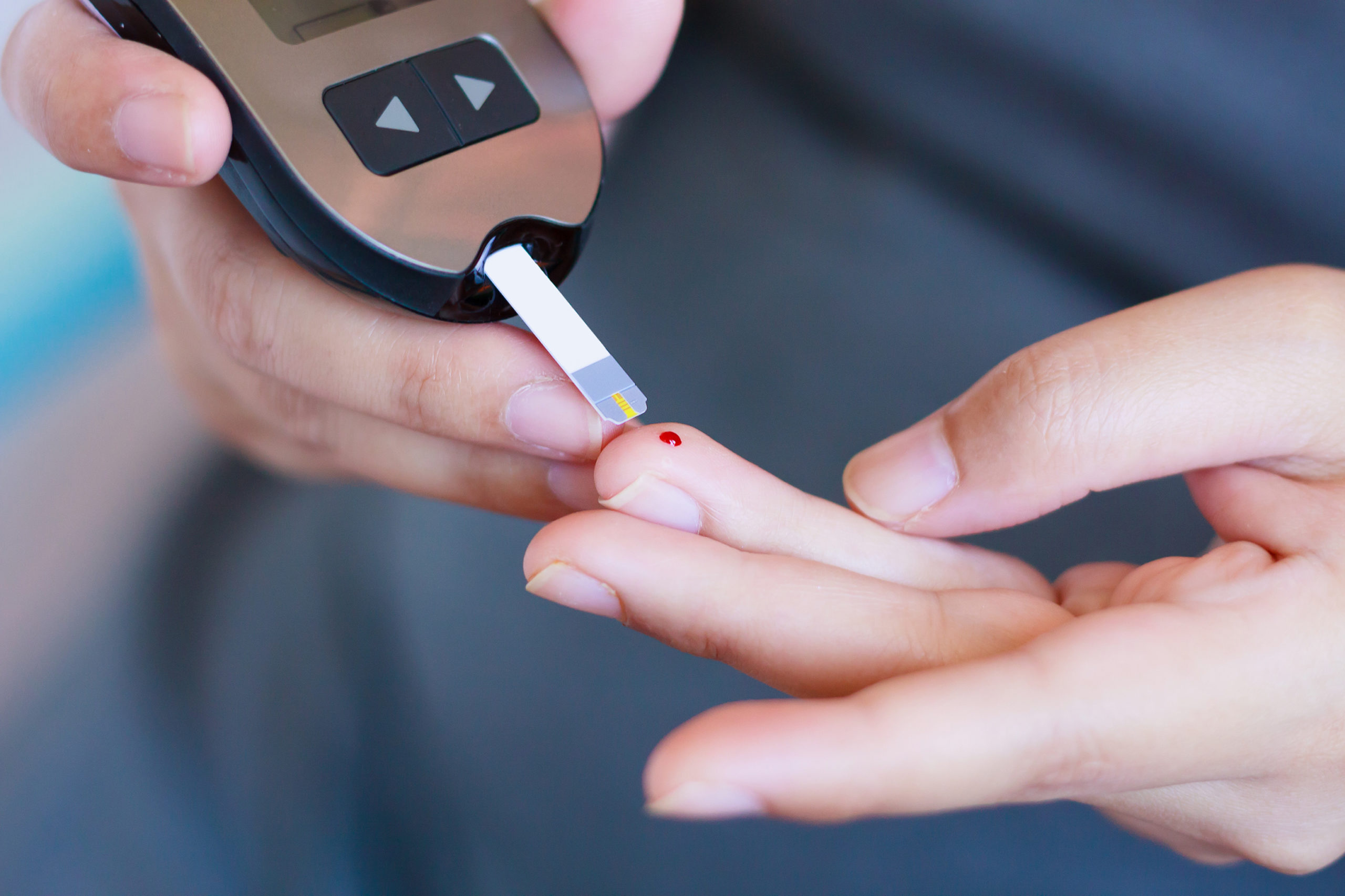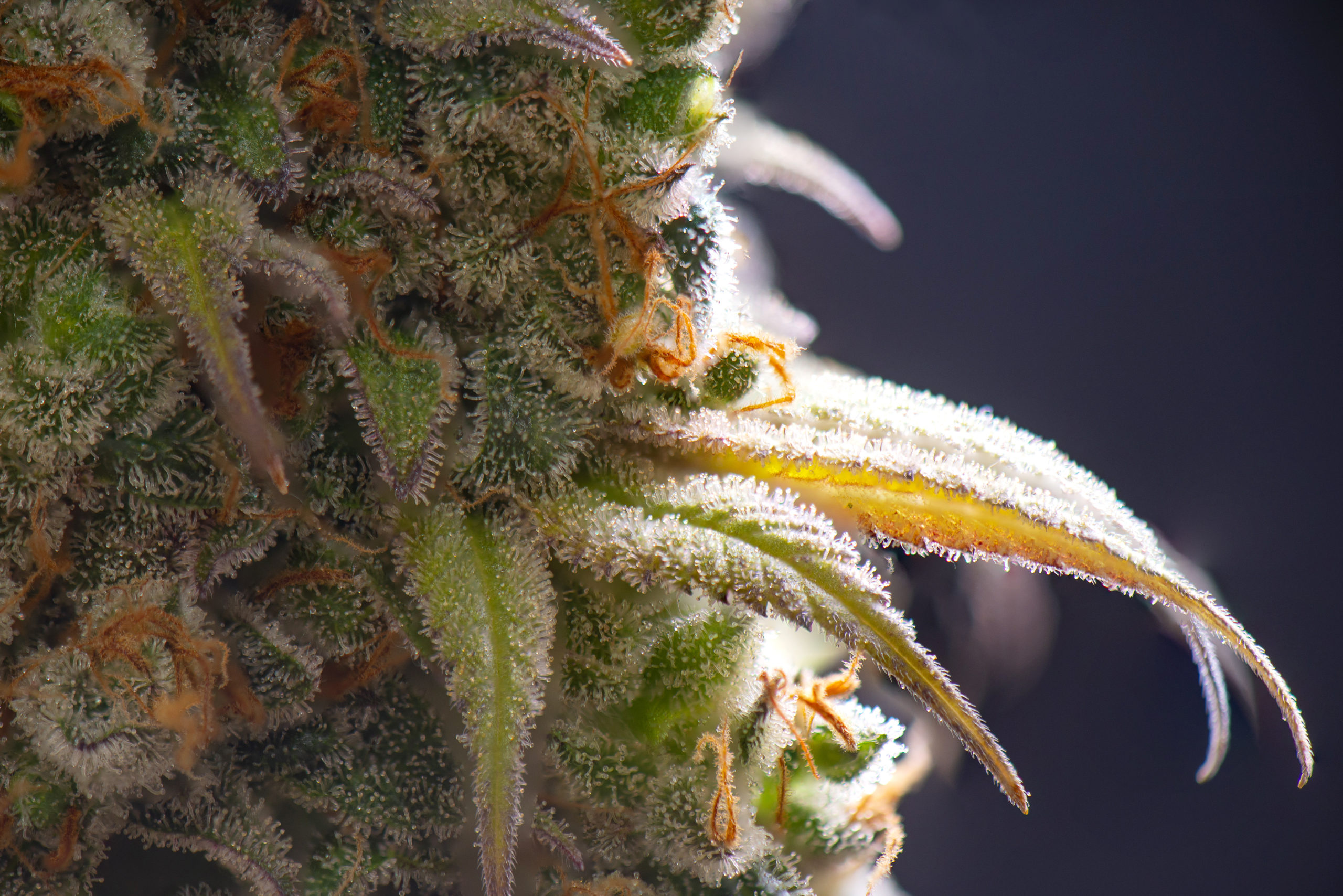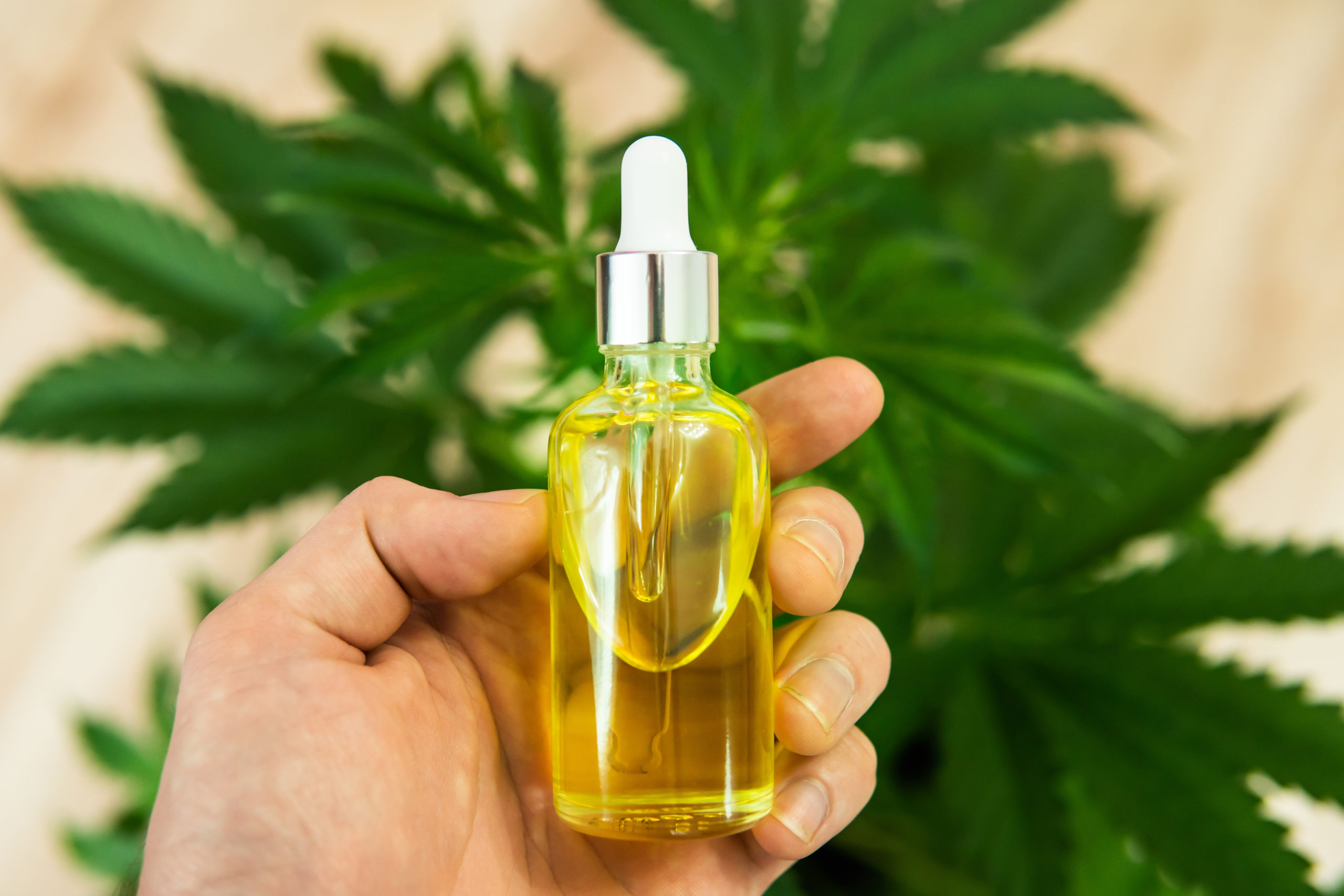-
- Market Research
- |
- CBD Near Me
- |
- Giveaways
- |
- Newsletter
- |
- Contact
- |
- Advertise
- |
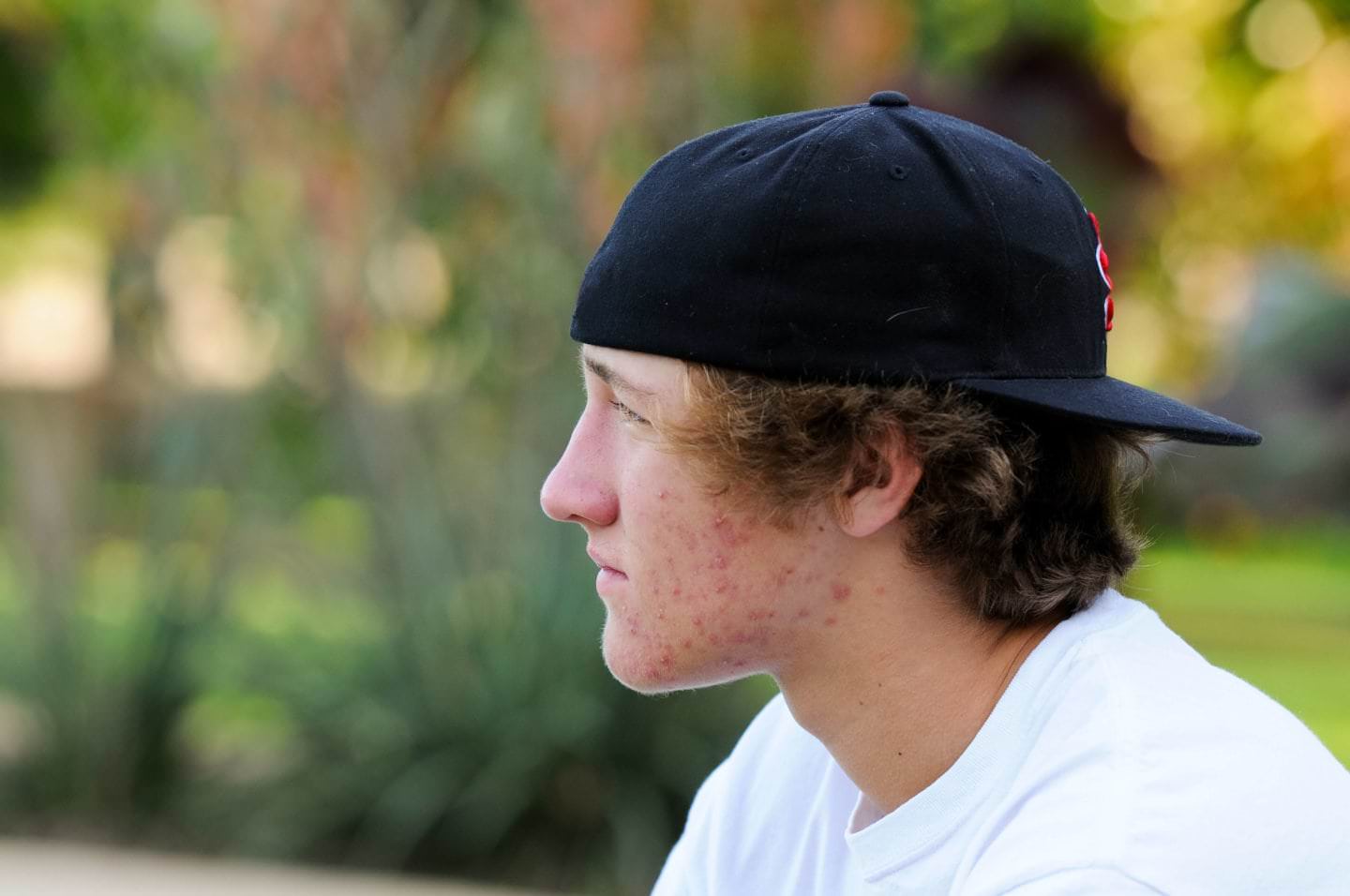
Acne is a frustrating and persistent skin disease that can seriously affect an individual physically and socially. Fortunately, a growing number of people are optimistic that cannabidiol (CBD) is a viable treatment option. Many studies by Tamás Bíró, a leading researcher in this field from the University of Debrecen in Hungary, show that CBD’s effects on the endocannabinoid system can prevent acne and help clear up skin conditions. This promising treatment could significantly help both adolescents and adults suffering from acne.
Table of Contents
- Overview of Acne
- How Acne Works
- Pathophysiology of Acne
- Acne Medication
- Studies Suggest CBD Effectively Treats Acne
- Study Uses Cannabis Seed Extract Cream for Acne
- Study Shows CBD Prevents Sebum Production and is Anti-Inflammatory in Acne
- Evaluation of the Endocannabinoid System in the Skin
- Experiment with CBD Shows It Effectively and Efficiently Treats Acne
- How CBD Treats Acne
- CBD Inhibits Lipid Synthesis
- CBD Reduces Inflammation
- CBD May Restore Self-Confidence in Acne Patients
Overview of Acne
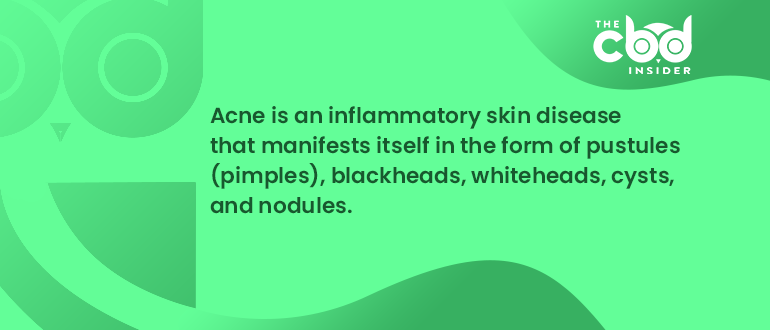
According to the American Academy of Dermatology, acne is the most common skin condition in America with about 40-50 million American people affected.
Acne is more common during adolescence; however, prevalence is growing in adults, especially adult women who are developing acne after the age of 30 and well beyond.
Acne is an inflammatory skin disease that manifests itself in the form of pustules (pimples), blackheads, whiteheads, cysts, and nodules.
Aside from physical symptoms, acne can cause low self-esteem and depression.
How Acne Works
Before diving into how CBD can treat acne, it is important to know how it develops.
Pathophysiology of Acne
Several factors contribute to the development of acne including excess sebum, inflammatory cells, and bacterial colonization in the pores.
Primarily, acne occurs when the sebaceous glands (small glands in the skin which lubricate skin and hair) produce too much sebum (a lipid, which is a fatty acid).
The excess sebum creates an environment favorable for bacteria called “Cutibacterium acnes” to colonize in the pores.
Finally, the bacteria produce inflammatory cytokines, resulting in the various observable manifestations of acne.
Excess lipids may be partly caused by an imbalance in the endocannabinoid system (ECS), the system which maintains the homeostasis of several bodily functions including the skin.
When endocannabinoids such as anandamide activate the CB2 receptors in the ECS, they help create lipids, which can contribute to excess sebum if an imbalance in the system is present.
Hormones can also cause acne as they may contribute to excessive lipid production.
Acne Medication
These are some of the most common acne treatments:
- Retinoid drugs, derived from Vitamin A (Avita, Retin-A)
- Antibiotics
- Azelaic acid cream
- Dapsone (Aczone)
Most acne medications are topicals or oral pills. Acne medications usually attempt to treat acne by either killing bacteria or reducing oil production in the skin.
However, some treatments can have harmful side effects.
For example, Vitamin-A treatments can cause dry and itching skin by killing both diseased and healthy fat cells. Some forms of Vitamin-A treatment, such as isotretinoin, can cause more serious side effects like back and joint pain, hearing loss, or severe gastrointestinal issues.
Scientific evidence demonstrates CBD could be safer and more efficient than the common Vitamin A-derivative medications.
Studies Suggest CBD Effectively Treats Acne
| STUDY | FINDINGS |
| Cannabis Seeds for Acne | Cannabis seeds significantly decreased sebum in cheeks; Cannabis had no side effects |
| CBD on Sebaceous Glands | CBD reduces sebum and inflammation in the skin; prevents the proliferation of sebocytes |
| Review of the Endocannabinoid System in the Skin | Anandamide and 2-arachidonoylglycerol help with lipid production; Cannabinoids, like CBD, can penetrate skin to treat acne |
| Experiment on CBD for Acne | CBD prevents anandamide function; CBD only targets decreased sebocytes; CBD is safe |
Research on CBD and the endocannabinoid system (ECS) offers promising results for the treatment of acne. First of all, the ECS has been shown to play a major role in hydrating the skin through the production of lipids. Anandamide, an endocannabinoid, appears to significantly enhance lipid production.
CBD seems to target the root of acne, which is excess sebum. Sebum, a fatty oil, is created by lipids. CBD limits sebum production by preventing anandamide from synthesizing lipids. Additionally, CBD also reduces inflammation, a common symptom of acne.
The following studies show how CBD and the ECS produce these effects:
Study Uses Cannabis Seed Extract Cream for Acne
A 2015 study led by the Department of Pharmacy at the COMSATS Institute of Information Technology in Pakistan tested the efficacy of a cream containing three percent cannabis seed extract for reducing sebum in human cheek skin.
Patients were given a base control cream without the extract and a base cream with the extract. The patients applied both creams on their cheeks twice a day for 12 weeks. Measurements for sebum production were recorded every two weeks.
The study reported that the cannabis seed extract significantly reduced sebum in the cheeks when compared with the control cream. Also, the cannabis seed extract was found to be well tolerated, and no side effects were noted in the study.
Researchers suggested cannabis could be a viable treatment for acne and other skin diseases.
Study Shows CBD Prevents Sebum Production and is Anti-Inflammatory in Acne
A study involving Tamás Bíró, an expert in the field of CBD for acne from the University of Debrecen in Hungary, studied CBD’s effects on inhibiting sebum production in human sebaceous glands (glands which produce sebum).
CBD was found to inhibit the production of lipids, the building blocks of sebum, on several lipid-producing compounds. CBD also suppressed proliferation of sebocytes (cells that produce sebum and make up the sebaceous gland).
In addition to reducing sebum production, CBD also demonstrated anti-inflammatory properties by inhibiting the elevation of tumor necrosis factor, a common type of cytokine involved in the inflammation associated with acne.
Both these effects prompted researchers to “strongly encourage” future clinical trials testing a topical or systemic application of CBD for acne.
Evaluation of the Endocannabinoid System in the Skin
A review by researchers from the University of Debrecen, New Jersey Medical School, the University of Lübeck in Germany, the University of Manchester, and the Laboratory of Physiological Studies at the National Institutes of Health evaluated the role of the endocannabinoid system (ECS) in the skin.
The team of researchers found the ECS balances the “proliferation, differentiation and survival” of skin cells, and that a disruption in this balance could cause any number of skin diseases, including acne.
In a section on acne, it was discovered CB2 receptors of the ECS were found on sebocytes and that endocannabinoids are major contributors to the production of lipids when they activate these receptors.
The review concluded that inhibiting activation of the CB2 receptors by cannabinoids could present a valuable therapy, especially since cannabinoids have already been confirmed to penetrate the skin in topical applications.
Experiment with CBD Shows It Effectively and Efficiently Treats Acne
In his lab at the University of Debrecen, Tamás Bíró conducted studies to test how CBD reduces acne.
Bíró found that CBD does not activate the CB receptors to stop lipid synthesis; instead, CBD binds to ion channels called TRPV4. When activated, these ion channels allow an influx of calcium into the sebocytes and prevent lipids from forming.
According to Bíró, CBD can prevent the actions of endocannabinoids from forming lipids as well as other mediators such as steroid hormones.
The study also found that CBD at the right concentration is an efficient therapy as it does not kill healthy sebocytes that surround the diseased ones, unlike some medications such as Vitamin-A derivatives. Killing healthy sebocytes results in the common acne medication side effect of dry skin.
How CBD Treats Acne
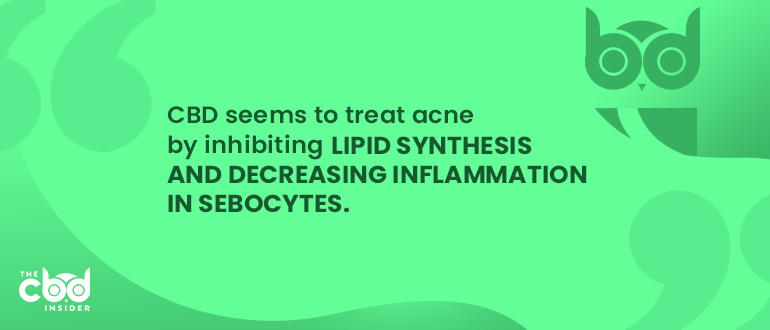
CBD seems to treat acne by inhibiting lipid synthesis and decreasing inflammation in sebocytes.
CBD Inhibits Lipid Synthesis
Excess sebum can be caused by an imbalance in the endocannabinoid system (ECS) and hormones.
When anandamide, an endocannabinoid, is released near the sebaceous glands, it dramatically enhances lipid production by activating the CB2 receptors on sebocytes. Thus, if an imbalance is present, anandamide may overactivate the CB2 receptors, causing sebocytes to produce too much sebum.
As Tamás Bíró has shown in his studies, CBD inhibits endocannabinoids like anandamide from synthesizing lipids. However, this is surprising since CBD usually promotes the actions of endocannabinoids.
The answer seems to be that CBD targets the TRPV4 ion receptors. When activated, the ion receptors open up to allow calcium into the cells, which inhibits anandamide’s ability to synthesize lipids.
Why exactly this happens is still being investigated.
Hormones, such as steroid hormones called glucocorticoids, also contribute to lipid synthesis. These hormones are believed to increase acne breakouts.
Bíró has found that CBD is “universally inhibitive of lipid synthesis,” meaning that CBD prevents lipid production from many sources, including steroid hormones.
CBD Reduces Inflammation
CBD has been shown to relieve inflammation in sebocytes, a much-desired aspect of an acne treatment.
Inflammation is caused by cytokines (proinflammatory proteins) released by bacteria that reside in the pores when excess sebum is present.
CBD targets three specific cytokines that play roles in the inflammation of acne: tumor necrosis factor (TNF), IL6, and IL1B.
TNF is one of the most common cytokines produced by the immune system and increases when excess lipids are present. CBD prevents TNF levels from rising, which can significantly reduce inflammation severity.
The occurrence of excess lipid production also elevates the IL6 and IL1B cytokines. CBD normalizes the levels of these cytokines by targeting the adenosine A2a receptor.
Adenosine is a component of ATP (adenosine triphosphate), the primary source of energy for cellular and muscular function, which has several potential benefits for skin.
CBD May Restore Self-Confidence in Acne Patients
Acne not only can be troublesome and annoying but it also can severely damage an individual’s self-esteem. Additionally, it can negatively affect a person’s ability to function socially.
Fortunately, the vast body of positive research surrounding CBD’s lipid inhibiting and anti-inflammatory properties show CBD is a viable treatment for acne. CBD also has a more favorable safety profile than some traditional acne treatments.
For the millions who live with acne, CBD could be the answer to restoring self-confidence and healthy skin.
Have you used CBD as an acne treatment? What kind of results did you achieve? Share your story in the comments!
Disclaimer: The content on this site is for informational purposes only. We are not medical experts and nothing should be construed as medical advice. Be sure to speak with your physician before taking CBD or any other treatment.


